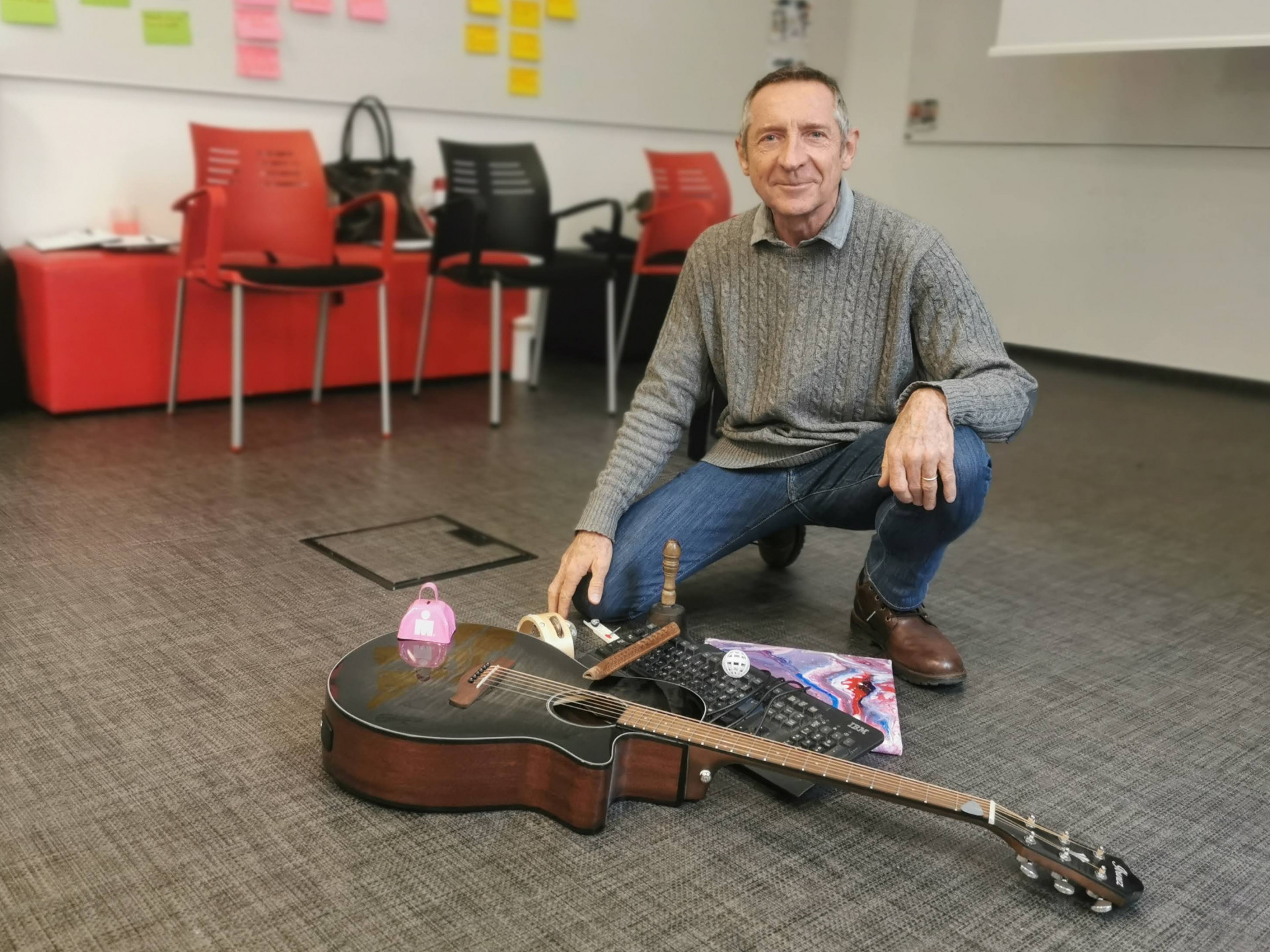Sound, Learning and Change
We all know what sound, learning or change mean, but when you look at the combination of these concepts, things become drastically different. New questions arise. Is there a meaningful relation between sound and change? What is the place and role of learning among these concepts? Why would a capacity development institution like the CEF bother about the combination of sound, learning and change? Would it not be more meaningful to analyze the three concepts independently?
A five-person team was set up to work on the surprising and challenging task to design a two-day staff development laboratory “Sound, Learning and Change”.
One certainty about this unconventional trilogy is that you can only start to make sense of it when you accept the permeability between change, learning and sound, and explore their points of contact or intersections. This is where new ideas pop up and this was our playground. To achieve results at the end of the journey, we all switched to an exploratory mindset that allowed radically different solutions to emerge.
After very little time and stimulated by the growing number of inputs on a dedicated Padlet space, the conceptual mix proved to be extremely rich with enormous potential for learning and change. Most of it still to be explored in the context of learning and capacity development.
During the last decades, a lot of importance has been given to the visualization of the learning content. The use of images, video, data visuals and infographs have become mainstream. But sound has been used much less. There was an empty space, a real potential that we wanted to explore. At first glance, sound is thought of as music or the human voice, but our daily exposure to sound is much wider. So, let us approach the sonic universe with a very incomplete brushstroke.
Sound is associated with life; parents anxiously expect their newborn’s first cry, and an infinity of sounds will accompany one’s life until the last breath. The range of sounds is so wide and diverse that the human ear is not able to hear it all. The Hungarian ornitho-musicologist Péter Szöke recorded bird songs and played them in slow motion to allow the human ear to hear all their complexities and rich musicality.

The loudest sound ever was not that of a manmade bomb; it was produced in 1883 by the eruption of the Krakatoa volcano in Indonesia, which scientists estimated to be of 310 dB. Sound is also connected to leadership and power; companies, politicians, team leaders make ample use of sound. Be them natural or human made, sounds are present everywhere. They help us connect, pay attention, meditate, understand and be alert; they impact our mood and vital functions.
Even when we are continuously exposed to sound, we seem to master less the tools to describe it. Think how difficult it would be to describe our best friend’s voice or the sound of a wave.
Several areas benefit from using sound in a learning process. Let’s think about the overlap in brain function between listening and reading, and the fact that listening usually contains a social experience that builds the working memory. Dialogue and active listening are basic approaches in psychotherapy. Active listening can ensure that one is fully present, with reduced distractions and willingness to be inclusive for diversity. Emotions are more easily transmitted through sound than text, as sounds are vibrations perceived by our ears and our whole body. It is therefore a physically engaging experience that can enable learning. Sound creates connections between people and concepts. Learning can be enhanced through stimulations produced by sound, which can facilitate a change in an organization and ensure that the change is more easily accepted.
In response to a questionnaire that was completed by the participants prior to the laboratory, two thirds of them indicated that their preferred sound was a natural sound, and all participants except two mentioned that abstract or informal sounds gave them positive feelings. However, these findings were rarely used by the participants in their professional context as trainers. This was the evidence that there was space and relevance for the laboratory, which helped participants to reflect on the use of sound in their professional context.
The experience was concluded by the individual production of a soundbite that could be used in a capacity development context. Participants’ productions were relevant, original, diverse and immediately usable in their work. The CEF and its staff is now equipped with the ingredients to make sound an integral part of any learning journey and capacity development project. In combination with visual stimulations, sound will produce surprising and long-lasting impact on everyone.
